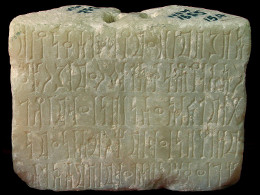
Corpus of Awsanite Inscriptions
The Awsanite corpus is a small epigraphic collection comprising some 30 inscriptions. They come from the region of the Awsan kingdom, located around the wādī Marḫa.
The majority of texts are dated to period C (from the 1st century BC to the early 2nd century AD), when Awsan became independent from Qataban. However, an inscription such as-Saqqaf 1, dated at period A and probably mentioning the first south Arabian mukarrib, testifies how important this kingdom was at the beginning of the 1st millennium BC.
The Awsan texts are in Qatabanic with some characterising features of Sabaic. Inscriptions from the "golden age" are usually dedications inscribed on the bases of human statuettes.
The interesting aspect is that some of them are dedicated to Yṣdqʾl Frʿm S²rḥʿt, who calls himself the son of the god Wdm, thus testifying the deification of the king when he was still alive.
There are some famous artifacts coming from Awsan, as the three statues in the National Museum of Aden, representing kings of the same family depicted with long dresses, sandals and jewels. Among them, the above-mentioned Yṣdqʾl is portrayed with a Roman tunic and probably a crown, thus attempting to imitate models foreign to the South Arabian tradition.
There are some famous artifacts coming from Awsan, as the three statues in the National Museum of Aden, representing kings of the same family depicted with long dresses, sandals and jewels. Among them, the above-mentioned Yṣdqʾl is portrayed with a Roman tunic and probably a crown, thus attempting to imitate models foreign to the South Arabian tradition.